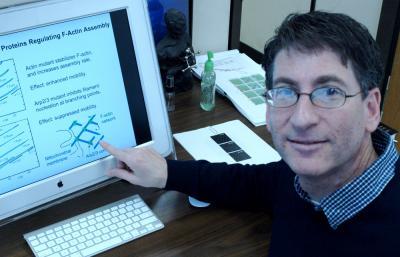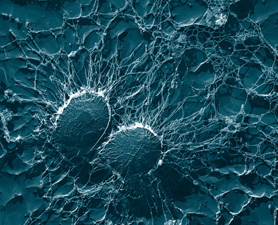
© University of OregonUO chemist Andrew Marcus has found that actin recruited by mitochondrial cells drive transport in budding yeast cells.
Using new technology developed in his University of Oregon lab, chemist Andrew H. Marcus and his doctoral student Eric N. Senning have captured what they describe as well-orchestrated, actin-driven, mitochondrial movement within a single cell.
That movement -- documented in a paper appearing online the week of Dec. 14-18 ahead of regular publication in the
Proceedings of the National Academy of Sciences -- appears to be coordinated by mitochondria's recruitment of actin-related proteins that rapidly assemble into extended fractal-like structures in a molecular chemical reaction known as polymerization. The coordinated movement of mitochondria is important for reproduction of identical daughter cells, and the sorting of mitochondrial DNA into the spinoff cells.
The research was done with a molecular fluorescence technology called Fourier imaging correlation spectroscopy that allows researchers using focused laser beams to see, measure and map the intermittent movement of mitochondria at micron scales. Marcus will discuss the technology, developed with funding from the National Institutes of Health and National Science Foundation, at the 2010 annual meeting of the American Physical Society in Portland, Ore., in March. It also was detailed in a paper published online in October by the journal
Annual Reviews of Physical Chemistry.

